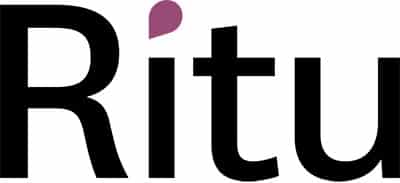4 Tips for Taking Your Public Speaking from Good to Great — Whether in Person or by Video

As a kid growing up, I loved speaking in class and giving speeches, and I even won a couple of speaking competitions (#nerdalert), but the older I got, the less comfortable I became with public speaking. By the time I was a junior lawyer, I had started to feel really uncomfortable presenting to audiences and speaking at meetings, in large part due to the fact that I was behaving as my Performing Self at work.
During those days, if you’d told me that one day I’d be a professional speaker, I would have said, “Get outta here!” But here we are now, decades later, and I’m blessed to speak on inclusion, leadership, authenticity, empowerment, and more for a living.
Getting to this place took a lot of hard work, and I was blessed enough to have great mentorship along the way. Through my experience (I’ve now presented over a thousand times to organizations around the world), I’ve developed specific practices that enable me to command attention onstage — and online, considering most of us are now public speaking/presenting virtually — and deliver my content as effectively as possible.
There are 4 specific tactics that I’ve learned along my journey that, if practiced, will help you become a better public speaker. Whether you’re presenting in a boardroom, classroom, conference room, theater, or on a video conferencing platform, paying attention to these elements will help you better connect with your audience, come across as polished and professional, and communicate your ideas in an engaging and effective way.
1. Body Positioning is Everything
Body positioning isn’t something I considered when I first started presenting, but I know now that it’s critical! This first became clear to me when I first did my yoga teacher training many years ago. We were taught, in the context of becoming skilled yoga teachers, how to move our energy throughout the room while teaching. Essentially, where you place your body in relation to the audience has a huge impact on how you are received.
There are a few key ways to ensure that your body positioning is optimal. For in-person presentations, the basic rules are to always stand (never sit) and avoid hiding behind a podium. Always make sure there isn’t anything physically placed between you and your audience. Next, think about proximity. You want to place yourself as close as possible to the audience. This means standing towards the front of the stage or walking as close to the front row of the audience as you can.
For my virtual presentations and webinars, I always sit (not stand), and I make sure to position myself in the frame like a headshot — centered on screen and without my head being cropped. You’ll also want to ensure that you have good lighting, either by setting up in a space that has good natural light or by using a ring light.
Finally, I’m what I call a “mover and shaker” when I present. This means that I move around a lot. I pace slowly across the stage or the front of the room throughout my live presentations and even on Zoom webinars I’m always gesturing with my hands. It may drive videographers crazy, but it’s effective for commanding attention and keeping the audience engaged — and it helps to move my energy through the room, just like the yogis advise.
2. Body Language is Important Too
Your body is a vessel for your message, so it’s important to take body language into account. For example, although I’m tall, I’m still petite, so I need to make an effort to ensure that my physical presence is felt in the room. To do this in person, and to ground myself onstage, I call on a favorite yoga pose (which also happens to be a power pose!), tadasana (mountain pose). This pose, which involves rooting through the feet, straightening the spine, and lifting through the crown of the head, also helps me to naturally deepen my breath and improve my posture, presence, and comfort in front of the crowd. (For more on how to use power poses for better presence, watch Amy Cuddy’s legendary TED Talk.)
And as I mentioned above, I’m also big on talking with my hands. Being animated in your gestures — with your fingers, hands, arms, legs, you name it — and facial expressions creates interest for the audience and can help emphasize content, especially if you’re presenting online. For example, I use non-verbal communication to emphasize words, highlight lists, draw attention to particular points, or add humor — especially when I’m telling a story. In all my years of speaking, I’ve rarely been told that I’m not engaging, and I credit this to my lively stage presence.
Watching a presentation is, in the end, a visual experience, so next time you present, think about how you can leverage power poses and non-verbal communication to improve your presence onstage or on screen.
3. Be Mindful of Your Voice
I’ve learned to play with the elements of my voice — including pitch, tone, volume, and speed — to add variety to my presentations, and I love doing this as a way to shake things up. When you skillfully vary these elements, it makes your presentation more engaging. This is a strategy that people rarely talk about, but it’s actually quite powerful.
Volume is fundamental. Vary your volume throughout your talk, but ensure that you’re loud enough to command attention and be heard. A good microphone is absolutely vital for video presentations, and breathing deeply will help with volume and with projecting, intonating well, and speaking smoothly. When you’re not breathing deeply, your words can sound slurred or muffled. As a fast talker myself, I know it can be hard to slow down your speech, but varying your pace is important to communicate effectively.
When it comes to the words you use, ensure that you vary your language to avoid sounding repetitive. Also, nerves or lack of practice can lead to using a lot of “filler” words like “um” and uh” when you speak, which is something to avoid. As with all voice-related strategies, you can train yourself on this over time. In other words, practice, practice, practice!
4. Use Notes Strategically
Even though I know my content inside out, I always bring notes with me. It can be distracting (and, frankly, look sloppy) to bring full-sized pages with you onstage, so I’ve developed a trick: I have my notes printed out on single-sided, half-page paper, and I leave them on a podium or table while on stage or on a note stand for virtual speaking events. Then I can glance at them if needed while I’m speaking.
Rather than printing out my whole talk, I type out my notes in bullet point form, capturing the flow of ideas, concepts, and sound bites I’ll be covering. Having this framework handy helps me to stay on track, especially when I am time limited.
One warning here: Don’t script your whole talk. If you memorize it word for word, it will sound mechanical when it comes time to deliver it for real. Rather, practice explaining your concepts and ideas a few times in natural language.
Go Forth and Practice!
Now that you know a few of the tricks, it’s time for the hard part — practice. I can’t emphasize the importance of it enough. Practice helps your ideas make their way into your unconscious brain, which in turn makes them easier to recall under pressure and stress. Ultimately, practice and experience are the ingredients that separate a good presentation from a great one. Now is as good a time as any to begin.

I'm Ritu.
I’m an award-winning life coach, empowerment speaker, author, and inclusion expert dedicated to helping you live your best life.

Join MY COMMUNITY
Sign up for my mailing list to get free inspiration and tools straight to your inbox!
Top Posts

Dig deep into your journey to belong.
Be the first to learn about my authenticity and empowerment goodies and get them straight to your inbox.








